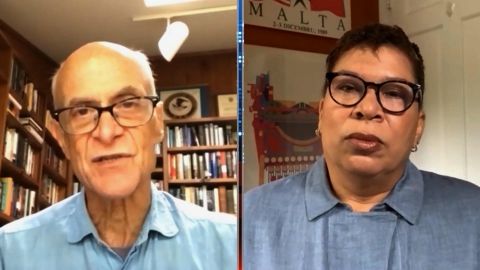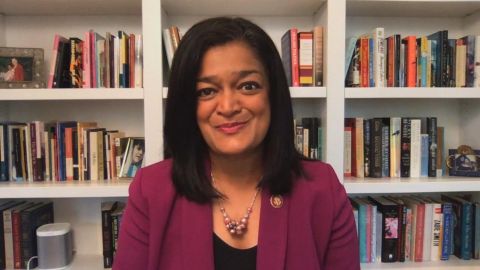Read Transcript EXPAND
CHRISTIANE AMANPOUR: I’m fascinated by what you say that photographing black people at leisure is radical. Not the fact that they’re at leisure, but photographing them is radical. Why is that?
TYLER MITCHELL, PHOTOGRAPHER, “I CAN MAKE YOU FEEL GOOD”: Yes. Well, you know, it has to do with denied histories, right, and this idea that visualizing, and making images and projecting those and stating visualizing black folks enjoying their lives is important, right? What is central to that in my work is that existing in a public space for black folks in America has been denied psychically in our minds at any moment that, you know, freedom or that enjoyment that we’re having or that pleasure could be taken away or shipped away. So, to me this book, you know, stands for a beacon of that.
AMANPOUR: This is all “I Can Make You Feel Good”?
MITCHELL: Yes.
AMANPOUR: What does that mean? Who are you saying it to?
MITCHELL: It’s the title of a Shalimar song, really. I heard it from a soul song. And I heard it in the Atlanta Airport when I was travelling to Amsterdam for my show, and I thought, that’s the title. I love this idea of it being a really simple, unacademic statement about feeling good, about optimism, but it also has a gut punch, it’s very direct, it’s from me to you, from the photographer to the viewer. So, simply —
AMANPOUR: And in your opening statement here, you have some pretty, you know, pointed and poignant messages. So, I’m going to read a bit from the state. I often think about what white fun looks like and this notion that black people can’t have the same. My work comes from a place of wanting to pushback against this slack. I feel an urgency to create a body of images where black people are visualized as free, expressive, effortless and sensitive. I feel like you’re trying to correct a balance.
MITCHELL: Maybe.
AMANPOUR: An imbalance.
MITCHELL: Maybe. I’m mainly trying to create like a self-contained utopia, a self-contained world. And yes, it was about bringing my own autobiographical experience to my instinctive response to those images. So —
AMANPOUR: You know, some of them — well, they’re all just kind of normal, stuff that you would see. The famous (INAUDIBLE) iconography of white people in a painting at leisure.
MITCHELL: Yes.
AMANPOUR: And you have the red gingham matt or tablecloth where you got some people lying down. You’ve got people at fun in a park. What are they saying to you, those particular pictures?
MITCHELL: I think about people like Kerry James Marshall who has been making amazing work for years about the black experience. I think about what he said when he was trying to bring together with his vignette paintings, rococo paintings, right, flowery or kind of over the top just luxurious enjoyments of life, right? Scenes — rococo paintings were essentially frivolous, they’re all about frivolity and I love that he was trying to bring together that with some of the social kind of our political feelings and statements that he wanted to kind of unify in one painting. So, I think these pictures respond to that.
About This Episode EXPAND
Christiane speaks with Carol Moseley Braun, the first Black woman to become a U.S. Senator and Pramila Jayapal, the first South Asian woman elected to the House of Representatives, about Kamala Harris’ historic nomination. She also speaks with photographer Tyler Mitchell about his new book “I Can Make You Feel Good.” Michel Martin talks to former Secretary of Homeland Security Michael Chertoff.
LEARN MORE



